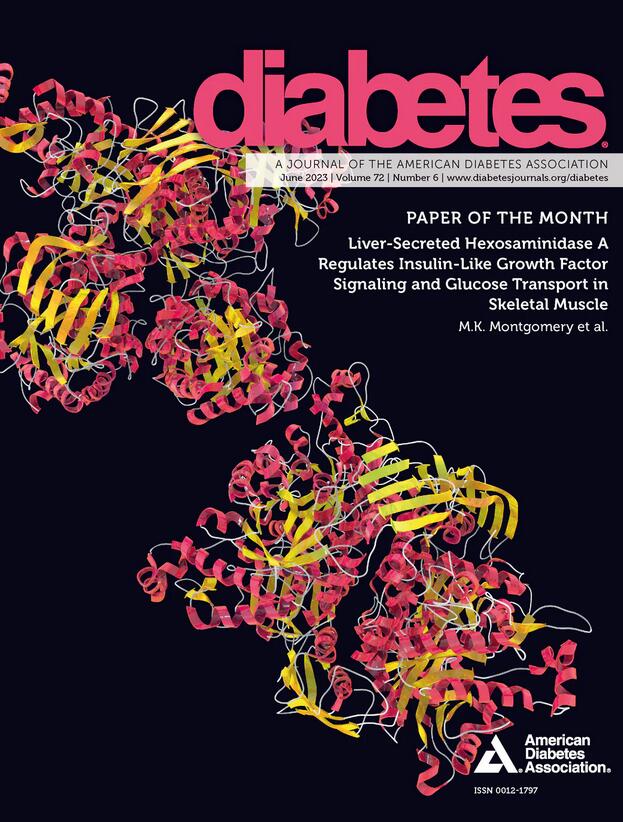355-OR: Glycemic Outcomes with CGM Use in Patients with Type 2 Diabetes—Real-World Analysis
IF 6.2
1区 医学
Q1 ENDOCRINOLOGY & METABOLISM
引用次数: 0
Abstract
Introduction & Objectives: While the benefits of CGM use in T1D are well documented, its efficacy across the spectrum of T2D patients in real-world settings has not been evaluated. We assessed the effects of CGM use in a large T2D adult population across the treatment spectrum, considering non-insulin therapies (NIT), basal insulin (BIT), and prandial insulin (PIT) with/without non-insulin medications. Methods: This retrospective,12-month analysis used data from a large claims database that included >7.1 million patients with T2D in the electronic medical records. The two observation periods were: pre-index period -- 360 days prior to patients' first CGM claim; and post-index period -- 360 days after to the first CGM claim. The index date (baseline) was the date of the first CGM claim between December 27, 2019, and January 5, 2022. The primary outcome was change in HbA1c closest to 12 months after CGM acquisition. Results: The analysis included 16,410 adults with T2D (NIT, n=4,659; (BIT, n=6,182, and PIT, n=5,569) with mean baseline HbA1c 8.8% and mean age 59 years. At 12 months, the mean change in HbA1c was significant in all three subgroups compared with HbA1c levels in the pre-index period. (Figure) Conclusions: In this 12-month, real-world study, CGM use was associated with significant improvements in glucose control in both non-insulin and insulin-treated patients with T2D. Disclosure S.K. Garg: Research Support; Eli Lilly and Company. Advisory Panel; Medtronic. Research Support; Medtronic. Advisory Panel; Novo Nordisk. Research Support; DarioHealth Corp., Dexcom, Inc., Diasome. Advisory Panel; Roche Diabetes Care. I.B. Hirsch: Advisory Panel; Abbott. Research Support; Dexcom, Inc. Advisory Panel; Roche Diabetes Care. Research Support; MannKind Corporation, Tandem Diabetes Care, Inc. Advisory Panel; embecta. Research Support; Tandem Diabetes Care, Inc. Advisory Panel; Vertex Pharmaceuticals Incorporated. E. Repetto: Employee; Roche Diabetes Care. B. Ulmer: Employee; Roche Diabetes Care. C. Perkins: Employee; Roche Diabetes Care. J.K. Snell-Bergeon: None. R.M. Bergenstal: Other Relationship; Abbott. Research Support; Arkray Marketing. Consultant; Ascensia Diabetes Care, Bigfoot Biomedical, Inc., CeQur. Other Relationship; Dexcom, Inc., Eli Lilly and Company. Consultant; embecta, Hygieia. Research Support; Insulet Corporation. Consultant; MannKind Corporation. Other Relationship; Medtronic, Novo Nordisk. Consultant; Onduo LLC, Roche Diabetes Care. Other Relationship; Sanofi. Research Support; Tandem Diabetes Care, Inc. Other Relationship; UnitedHealth Group. Consultant; Vertex Pharmaceuticals Incorporated, Zealand Pharma A/S. Funding Roche Diabetes Care355-OR: 2 型糖尿病患者使用 CGM 后的血糖结果--真实世界分析
导言& 目标:虽然 CGM 对 T1D 患者的益处有据可查,但尚未对 CGM 在 T2D 患者中的实际疗效进行评估。考虑到非胰岛素疗法(NIT)、基础胰岛素(BIT)和餐前胰岛素(PIT)与非胰岛素药物/非胰岛素药物,我们评估了 CGM 在大量 T2D 成人患者中的使用效果。方法:这项为期 12 个月的回顾性分析使用了一个大型索赔数据库中的数据,该数据库包括电子病历中的 710 万名 T2D 患者。两个观察期分别为:指数前期--患者首次申请 CGM 之前的 360 天;指数后期--首次申请 CGM 之后的 360 天。指数日期(基线)是指在 2019 年 12 月 27 日至 2022 年 1 月 5 日之间首次申请 CGM 的日期。主要结果是获得 CGM 后最接近 12 个月的 HbA1c 变化。分析结果分析对象包括 16,410 名患有 T2D 的成人(NIT,n=4,659;BIT,n=6,182;PIT,n=5,569),平均基线 HbA1c 为 8.8%,平均年龄为 59 岁。在 12 个月时,所有三个亚组的 HbA1c 平均值与索引前的 HbA1c 水平相比均有显著变化。(图)结论:在这项为期 12 个月的真实世界研究中,CGM 的使用与非胰岛素治疗和胰岛素治疗的 T2D 患者血糖控制的显著改善有关。披露 S.K. Garg:研究支持;礼来公司。顾问团;美敦力。研究支持;美敦力。顾问团;诺和诺德公司。研究支持;DarioHealth Corp.、Dexcom, Inc.、Diasome。顾问小组;罗氏糖尿病护理公司。I.B. Hirsch:顾问团;雅培。研究支持;Dexcom, Inc.顾问小组;罗氏糖尿病护理公司。研究支持;MannKind Corporation、Tandem Diabetes Care, Inc.顾问团;embecta.研究支持;Tandem Diabetes Care, Inc.顾问团;Vertex Pharmaceuticals Incorporated。E. Repetto:罗氏糖尿病护理公司雇员。B. Ulmer:罗氏糖尿病护理公司员工。C. Perkins:罗氏糖尿病护理公司员工。J.K. Snell-Bergeon:无。R.M. Bergenstal:其他关系;雅培。研究支持;Arkray Marketing。顾问;Ascensia Diabetes Care、Bigfoot Biomedical, Inc.、CeQur。其他关系;Dexcom 公司、礼来公司。顾问;embecta、Hygieia。研究支持;Insulet 公司。顾问;MannKind 公司。其他关系;美敦力、诺和诺德。顾问;Onduo LLC、罗氏糖尿病护理公司。其他关系;赛诺菲。研究支持;Tandem Diabetes Care, Inc.其他关系;联合健康集团。顾问;Vertex Pharmaceuticals Incorporated、Zealand Pharma A/S。资助罗氏糖尿病护理公司
本文章由计算机程序翻译,如有差异,请以英文原文为准。
求助全文
约1分钟内获得全文
求助全文
来源期刊

Diabetes
医学-内分泌学与代谢
CiteScore
12.50
自引率
2.60%
发文量
1968
审稿时长
1 months
期刊介绍:
Diabetes is a scientific journal that publishes original research exploring the physiological and pathophysiological aspects of diabetes mellitus. We encourage submissions of manuscripts pertaining to laboratory, animal, or human research, covering a wide range of topics. Our primary focus is on investigative reports investigating various aspects such as the development and progression of diabetes, along with its associated complications. We also welcome studies delving into normal and pathological pancreatic islet function and intermediary metabolism, as well as exploring the mechanisms of drug and hormone action from a pharmacological perspective. Additionally, we encourage submissions that delve into the biochemical and molecular aspects of both normal and abnormal biological processes.
However, it is important to note that we do not publish studies relating to diabetes education or the application of accepted therapeutic and diagnostic approaches to patients with diabetes mellitus. Our aim is to provide a platform for research that contributes to advancing our understanding of the underlying mechanisms and processes of diabetes.
 求助内容:
求助内容: 应助结果提醒方式:
应助结果提醒方式:


